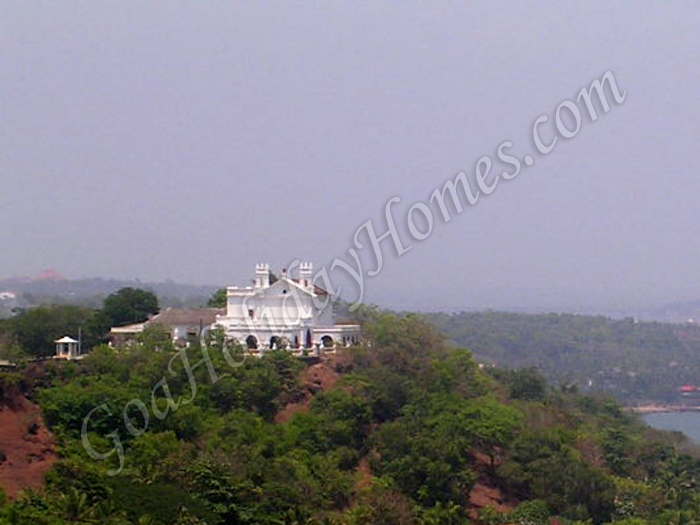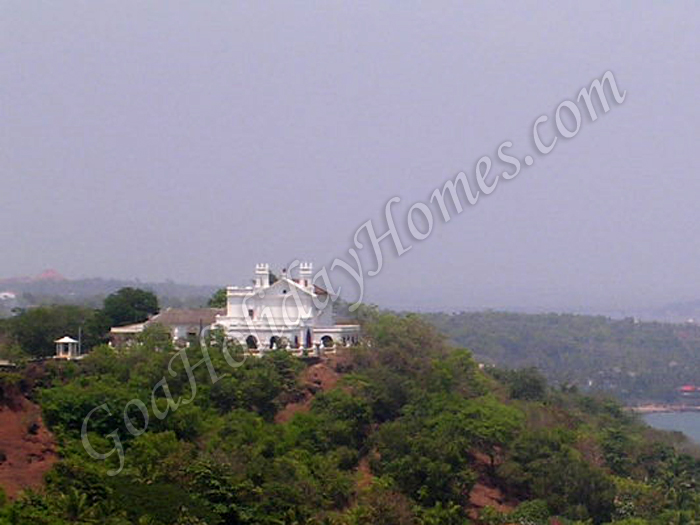The Church of St Lawrence

The Church of St. Lawrence was found in 1630 by the Count of Linhares, Viceroy Dom Miguel de Noronha when a decision to build a church was taken as soon as the fort was completed.
The importance of Panjim as the future capital was foreseen by him as he built a causeway from Panjim to Ribander. The church was built a near distance from the citadel of the fort in order to prevent the enemy from getting a close by outpost. Its site was determined by the huge size of Aguada and the exact location was determined by the presence of an old destroyed Hindu temple. The founding and completion of the church is recorded in contemporary inscriptions above the arch of the porch when it was completed in 1643 and attained parish status in 1688.
It encloses a group of buildings with a courtyard and residence. The façade is concealed by a big cloistered porch and has a plain triangular gable with a single round window in the center. The design is complete with 2 narrow towers behind it. The tiny church behind has limited seating arrangements, hence benches are placed inside the porch which makes a convenient and pleasant place for worship. The pillars are decorated with inscriptions from the life incidents of St. Lawrence and his martyrdom with white bas relief plaster.
Internally, the only altar is the one dedicated to St. Lawrence. He is shown holding a boat in one hand and is rightfully known as the Patron Saint of Sailors. His statue is encased in a glass case beneath the baroque reredos. The paneled vaulting is exquisitely decorated and the risers of the steps of the altar have attractive blue and white tiles. This church can be seen from the opposite shore of the Mandovi river and the cemetery with its new cross on a modern concrete pedestal appears as if it has been given a place on the skyline judging by its position on the hill crest.
At the end of the monsoon, the festival of St. Lawrence is held each year to celebrate the sand bar clearing in order to make the river navigable for ships for the next season. In olden times, the actual cutting of a rope stretched across the river symbolized the celebration of the festival.
The view of the Bardez beaches northwards from the Aguada beach, uninterrupted till the headland of the Baga beach followed by the rocky bays of Anjuna beach and Vagator beach, finally culminating in the large heap of Chapora's rock faces crowned by the ruins of its fort, is indeed a pleasant sight. Accommodation behind this stretch has sprung up in leaps and bounds, ranging from the cheapest to the most expensive.
Although these beaches are unspoiled, they are usually not populated at all times. Calangute which is popular as the Queen of Beaches was the home of the first hippy population who later shifted to the Anjuna beach which was far more secluded and have been on the move since then. These beaches offer the most spectacular sunsets over the Arabian Sea making them very pleasant to visit, a hallmark of the tropical beaches, which are normally oriented towards the western direction, as are all the Goan beaches.
The Chapora fort although not as impressive as the Aguada, provides magnificent views atop with its wide empty space and vast horizon above making the climb worthwhile. It is approachable by a rough road leading from the far northern end of the Chapora bazaar and is even motorable for about half way.

